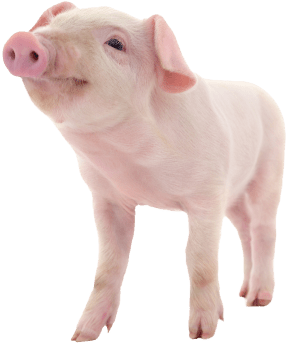Thermal & ULV Fogging Devices
Depending on where your farm is located, during warm weather months it’s next to impossible to prevent nuisance and blood-feeding flies and other insect pests from attacking livestock. If conventional insect control methods are not working, insecticide fogging is a cost-effective alternative solution, particularly for large facilities.
Insecticide fogging is also helpful for greenhouses where controlling insects is also a challenge. A fogger can reach even the tiniest of crevices where pests and other pathogens may be lurking.
What Is Fogging?
Since the late 1960s, chemical fogging has been an effective method of disinfecting livestock facilities and decontaminating equipment. A fogging device allows chemical solutions to be easily and rapidly applied to large spaces.
How Fog Machines Work
A fogging device is a type of atomizer that sprays ultra-fine droplets of a liquid chemical solution, creating a fog that fills the barn, disinfecting all surfaces, decontaminating equipment, and killing airborne insect pests and pathogens. Fogging particles kill insects on contact. It’s not a cure-all for insect problems and doesn’t reduce the need for preventive measures like good manure management, trash removal, and general sanitation.
Thermal Foggers vs ULV Foggers
There are two different types of fogging devices available: thermal foggers and ULV (Ultra Low Volume), also known as “cold foggers”. A thermal fogger is a device that uses heat to vaporize a chemical solution creating a fog or cloud that penetrates hard-to-reach areas. It generally uses a 40-ounce solution tank that contains a pump that transfers the solution to a heat assembly on the front of the device. A trigger activates the process.
A ULV fogger, by contrast, uses a cold spray method to spray fogging liquid into particles. They do not use heat to vaporize the fogging solution. In fact, “cold fogging” is more of a technique.
Before purchasing a fogger, know that each fogging method has its advantages and disadvantages.
Thermal Fogger Advantages
Thermal foggers have a few advantages over ULV foggers or cold fogging. The fog is highly visible, thick, and cloudy. Therefore, it is easy to see. This is good because the fog should be avoided by those using the device. If you can easily see the fog you’re spraying, you have a good chance of avoiding contact with it, as fogging solutions may contain chemical substances that can be harmful. Because of this high visibility, it is that much easier to direct the flow of insecticide to a specific area and have the certainty your efforts are not wasted another advantage.
A droplet in a thermal fog can be as small as half a micron in diameter depending on the nozzle used. Because of this extremely small size, the fog itself can achieve significant density and can penetrate extremely small areas.
Thermal foggers are also, generally speaking, more efficient than ULV foggers in more ways than one. They use a smaller amount of active ingredients and can spray more insecticide with less energy than cold foggers. They also can fog the same sized area as a cold fogger but in less time.
Thermal Fogger Disadvantages
On the other hand, thermal foggers require some sort of fuel to power the heating system. The obvious drawback here is the need to pay for (and carry) fuel. Like any other fuel-powered device, it must be refilled and works only as long as the fuel supply lasts. The need to refuel for fogging large areas can increase the job cost.
There is a risk of fire associated with thermal foggers because they use a heating system, which runs very hot. In fact, any indoor thermal fogging should be done with elevated caution
Cold Fogger Advantages
The essential advantage of the ULV (ultra-low volume) fogger is they don’t require fuel to operate a heating system. No fuel used means no fuel to purchase and replace which, in turn, means an overall lower operational cost. Some users also claim they are easier to operate as they can be left on as long as they have an electricity supply.
Cold Fogger Disadvantages
ULV foggers produce a nearly invisible fog. This can make directional fogging difficult, particularly if there is any breeze or wind in the facility—it’s harder to judge if you are efficiently fogging a desired area.
Where the droplet size of the thermal fogger was half a micron, the droplet of a ULV fogger is between 10-50 microns in size. This means cold fog will not be able to penetrate spaces as small as the thermal fogger. Larger particles will stay in the air for a shorter duration, as well, making insect control less pervasive as a thermal fog that suspends longer. Because of this, cold foggers generally take a longer time to fog the same area as effectively as thermal foggers.
Fogging Safety Equipment
Because barn fogging utilizes chemical insecticide, safety equipment should be worn while mixing and pouring the chemical solutions, and particularly while fogging. Standard biosecurity dress, including disposable suits and boots, rubber gloves, and full-face respirators are smart precautions. Because many foggers can be loud, noise-reducing headphones should be worn, particularly when fogging in an enclosed space. Otherwise, follow all the manufacturer’s operation recommendations.
Traditional pest control methods are often less effective than one would hope. As a periodic supplemental solution, fogging should create a dramatic difference in the pest levels in your agricultural building and provide significant relief to your livestock.
Tell us your experiences with thermal or cold fogging in the comments section! Not sure what you need? Give us a call at 888-433-5275.
















